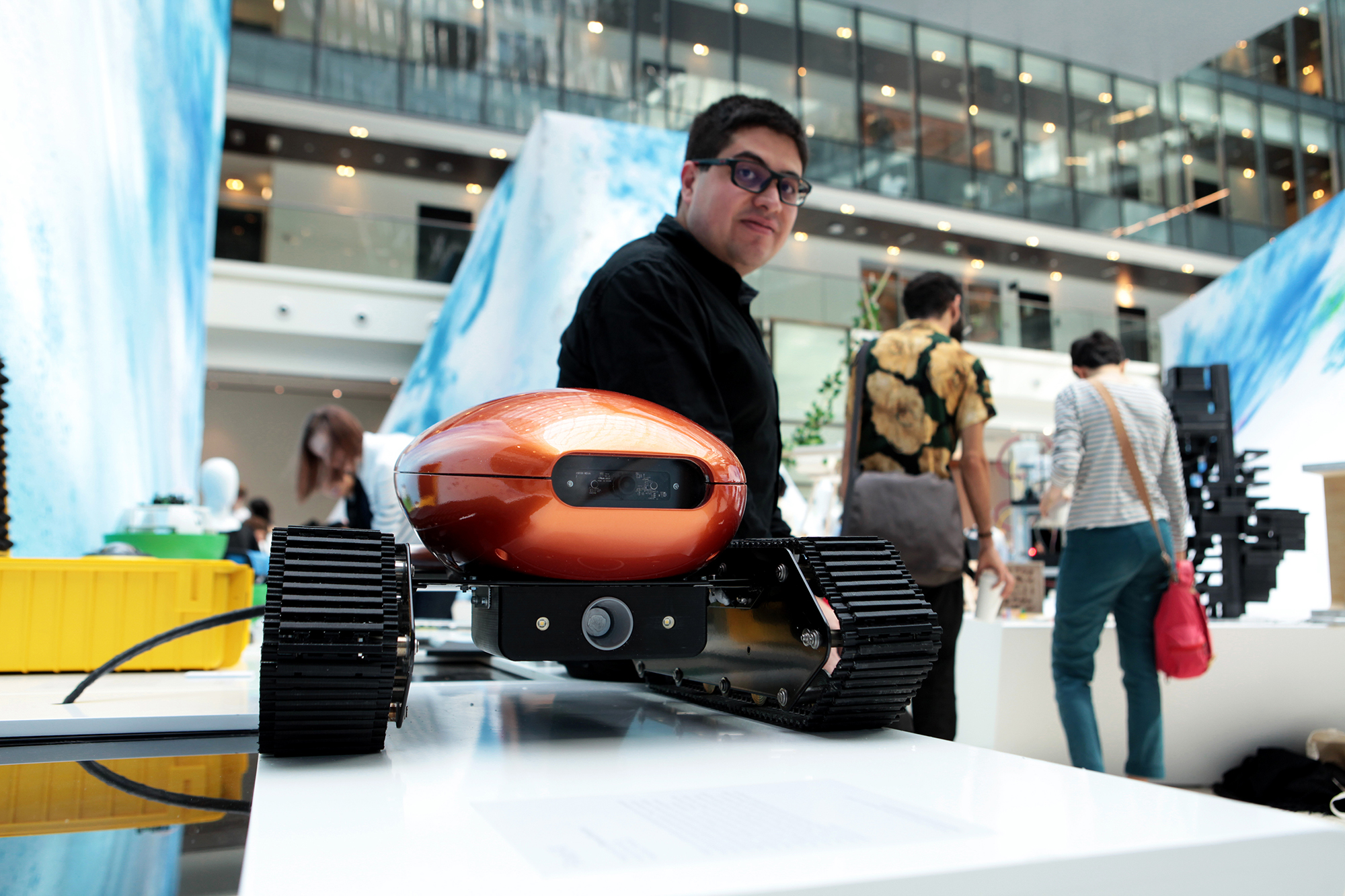IFA 2019 has seen a slew of announcements from major electronics brands, with new TVs, phones, and smartwatches aplenty. But it’s not just consumer electronics on show here — it’s also a great place to get a glimpse of emerging technologies which could change the way we live in the future. Here are 5 awesome pieces of new technology we spotted on the show floor this year.
- 1. Medical exoskeleton helps rehabilitate people with spinal injuries
- 2. Explore under the sea with a community-controlled underwater drone
- 3. Smart bike helmet keeps you safe as you ride
- 4. Configure this accessible gaming controller any way you want
- 5. Automated vegetable planter takes the guesswork out of gardening
- More from IFA 2019
1. Medical exoskeleton helps rehabilitate people with spinal injuries

People who suffer from lower limb deficits following a spinal cord injury or due to medical conditions such as cerebral palsy or multiple sclerosis face a long road of rehabilitation work to get them walking again. Russian company ExoAtlet is helping people along this journey with its medical exoskeleton. The device can be adjusted to the dimensions of the patient’s body and supports their weight as they practice walking, with a control system that detects their movements and imitates them for a more natural walking experience. The device is already in use in hospitals in Russia and South Korea and the company is waiting on FDA clearance to offer its product in the U.S. as well.
2. Explore under the sea with a community-controlled underwater drone

The Aalto Explorer project lets people from around the world get a glimpse of life beneath the waves by attaching a 360° camera to an underwater drone. Members of the public can view the footage live and even act as captain, steering the drone and gathering research data on water conditions. And if you have access to VR equipment you can see the visual information from the drone in VR to get a first-person view of ocean exploration. We spoke with the Aalto team to learn more about the project and its aims.
3. Smart bike helmet keeps you safe as you ride

It seems like everything at IFA this year was smart, from kettles to cushions. But one genuinely useful smart product on display was the Livall smart bike helmet. The helmet has sensors to detect light levels and automatically turns on front and rear lights so cars can see you at night. There’s also a small interface you attach to your handlebars, and when you’re intending to turn left or right you hit the button and the lights on the helmet will indicate for you. Plus there are integrated Bluetooth speakers above each ear so you can hear voice directions or take phone calls hands-free and safely.
4. Configure this accessible gaming controller any way you want

Whether for reasons of accessibility or comfort, there are lots of gamers who would like a more customizable console controller. The Plyy prototype offers just that, with a range of large and small sticky buttons and analog sticks that can be placed in any location on two paddles or a mat. We spoke to the Plyy’s head of design about the concept for the prototype and how it could make gaming more comfortable and accessible for all.
5. Automated vegetable planter takes the guesswork out of gardening

Growing your own vegetables and greens is a great way to enjoy fresh food, and it’s good for sustainability too. But as anyone who lacks a green thumb knows, getting plants to thrive can be a challenge. The Plantui planter is a hydroponic capsule which waters, feeds, and illuminates your plants and expands as they grow. The seeds come in a pod with all the nutrients they need — “like a Keurig for plants,” the rep told us — so you pop a pod into the planter and you can grow fresh food in a small space even without access to sunlight.
More from IFA 2019
This is just a taster of the technology on display at Europe’s largest technology exhibition. For more coverage of the event, check out our roundup of the biggest announcements of IFA 2019.




